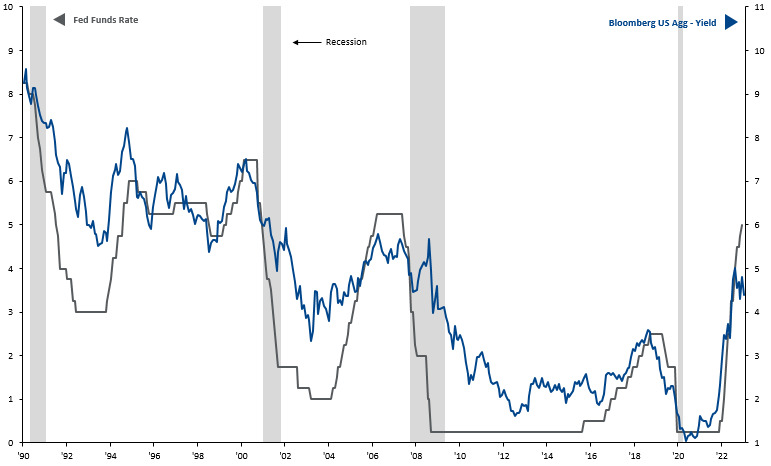Written by: David Lebovitz
At the start of the year, the term “soft landing” was a common refrain from both policymakers and investors. However, despite the most aggressive Federal Reserve (Fed) rate hiking cycle since the 1970s, growth has remained robust and inflation has moderated. The possibility that central bankers might have managed to thread the needle by bringing down inflation without damaging growth initially pushed recession forecasts out to 2024, but the banking crisis in both the U.S. and Europe has seen a sharp tightening in financial conditions as lenders strike a cautious tone and hold back on extending credit to the real economy. This was reflected in the most recent Senior Loan Officer Survey from the Federal Reserve, which showed a sharp tightening in lending standards to U.S. firms. If credit to the economy is choked off, then the ripple effects from recent bank failures could well pull forward the timing of any recession and potentially bring the Fed’s rate hiking cycle to a premature end.
Following the latest Fed meeting on March 22, the Chair of the U.S. Fed, Jerome Powell, acknowledged that a credit crunch would have significant macroeconomic implications that could potentially influence the trajectory of Fed policy. However, he added that “rate cuts are not in our base case.” Despite the Fed Chair’s comments, market pricing of the pathway for the Fed Funds rate has shifted markedly in the last few weeks. Investors now anticipate that a Fed pause is imminent and that they will begin cutting rates as soon as September 2023 as growth slows and inflation continues to abate.
As the Fed ponders its next step, investors should be mindful that the window of opportunity that has emerged in fixed income may slam shut quickly. The yield on the Bloomberg U.S. Aggregate Index ended March at 4.4%, close to its highest levels in nearly 15-years. However, as shown in the chart below, the yield of the Bloomberg U.S. Aggregate Index is closely tied to the Fed Funds rate; in prior recessions, as growth has stalled, the Fed has lowered rates and bond yields have quickly followed suit.
After seeing the Bloomberg U.S. Aggregate Index fall by 13% in 2022 – its worst year on record – it is understandable that some investors may feel queasy at the prospect of jumping back into fixed income markets. However, it is important to remember that the yield of a bond benchmark provides a reasonable estimate of its forward return. As such, with the current yield offered by the bond markets potentially the high-water mark for this rate hiking cycle, investors could be well-served by taking advantage of this opportunity before the window begins to close.
The Fed funds rate tends to track the yield of the Agg
Fed funds target rate vs U.S. Aggregate Index, %

Source: Federal Reserve, Bloomberg, J.P. Morgan Asset Management. Data are as of March 31, 2023.


